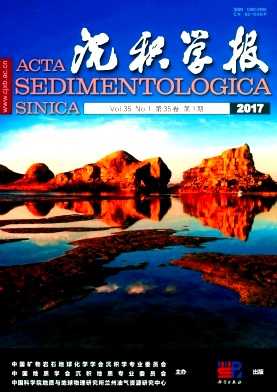Calcareous Root Tubes in the Alashan Deserts: morphological characteristics, classification and environmental significance
doi: 10.14027/j.cnki.cjxb.2017.01.008
- Received Date: 2016-02-02
- Rev Recd Date: 2016-05-09
- Publish Date: 2017-02-10
-
Key words:
- Alashan Plateau /
- calcareous root tubes /
- calcareous sheath /
- rhizocretion /
- secondary carbonate /
- desert
Abstract: The definition and classification of calcareous root tubes which have been used in different studies are still unified. However, it remains uncertain that whether different definitions of calcareous root tubes indicated the same morphology or not. At the same time, there were disagreements over the formation mechanism and paleoenvironment significance of calcareous root tubes. Some research results suggested that the formation of calcareous root tubes in this area indicated relatively humid climate conditions, while others argued that they were formed by recrystallization of calcium carbonate required the presence of underground water. In this study, 26 calcareous root tubes samples collected from the Alashan Desert are classified using morphological method, which was based on previous studies about the definition and formation mechanism of calcareous root tubes. Then the paleoenvironment significance for different types of calcareous root tubes was discussed. The results showed that calcareous root tubes were products of terricolous plants and were formed by encrustation of plant roots by secondary carbonates, including five subclasses, namely calcareous sheath, rhizocretion, root mould, root tubule, and root cast. Calcareous sheath and root tubule have hollow tubes in morphology, and then rhizocretion and root cast have structure of double layer cemented by calcium carbonate or solid construction filled with coarse gravel or sediment. Root mould is simply tubular voids left after roots decayed. According to whether the formation process is under the influence of plant growth and rhizosphere microorganism activity or not, the formation process can be divided into two patterns. Calcareous sheath and rhizocretion were formed by the influence of plant growth and rhizosphere microorganism activity, while the formation of root mould, root tubule, and root cast were not influenced by them. Thus, the classification of the above five subclasses can be distinguished by morphology character clearly. Results from n-alkanes indicated that abundant short chain alkanes which indicate the influence of plant growth and rhizosphere microorganism activity occurred in calcareous root tubes. Therefore, calcareous root tubes can be divided into calcareous sheath and rhizocretion in the Alashan Desert. Both of them occurred at the same sampling point. However, the quantity percentage of rhizocretion was variates in the Holocene. During the middle-Holocene, the quantity percentage of rhizocretion is significantly higher than that in the late Holocene. The formation of rhizocretion were jointly controlled by calcium solution leaching, CO2 produced by the rot of root, and rhizosphere becoming alkaline. Calcium solution leaching could be resulted in higher effective humidity. Therefore, changes in the quantity percentage of rhizocretion could indicate levels of effective humidity, higher quantity percentage of rhizocretion could be interpreted as a humid environment, and vice versa.
| Citation: | GAO YouHong, LI ZhuoLun, HAN Lang, LI RuoLan. Calcareous Root Tubes in the Alashan Deserts: morphological characteristics, classification and environmental significance[J]. Acta Sedimentologica Sinica, 2017, 35(1): 75-84. doi: 10.14027/j.cnki.cjxb.2017.01.008 |






 DownLoad:
DownLoad: